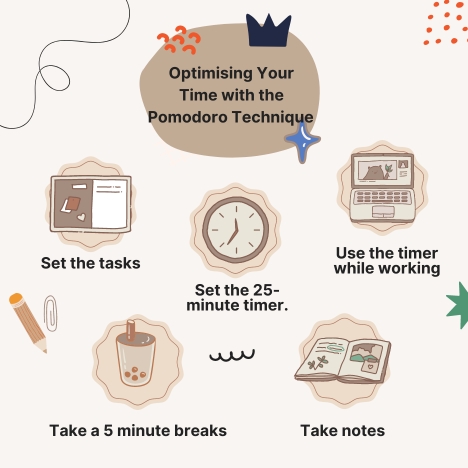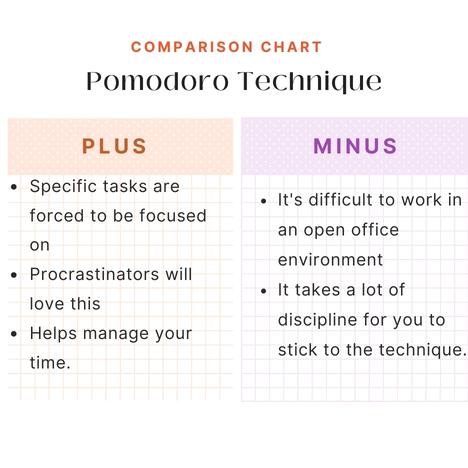Written by Rizwan Sharif
Let’s be honest, we’ve all done it… scrolling through Instagram or surfing the web for hours when we should be working on an assignment.
Or, remember a time when you started cleaning your room before a test, even though you knew it could have waited until after the test?
So, what is it that you were doing? You were procrastinating.
You were doing everything unnecessary to postpone your studies or an important task in hand.
How bad is procrastination?
Pretty bad if it becomes a habit because you are then either less prepared for not having ‘enough’ time or stressed out with the deadlines.
How to tackle procrastination
So, how can we deal with procrastination and better manage our time?
Easy. You can use the Pomodoro Technique.
This technique involves working in focused, 25-minute intervals separated by short breaks. It has been shown to be effective in helping people to stay on task and avoid distractions.
Francesco Cirillo created the Pomodoro Technique in the late 1980s when he was having trouble focusing on his studies and university assignments.
He found a tomato-shaped kitchen timer and decided to use it for just 10 minutes of focused study time, and that is how the Pomodoro Technique was born.
Wondering how to give it a go?
- Decide on a task and how long you will study for. Then, break down the tasks into 25-minute intervals called Pomodoro’s.
- Set a timer for 25 minutes and work on your task without distractions. If you have a thought that comes to mind, write it down to deal with later.
- After 25 minutes, take a 5-10 minute break. Use this time to refresh your mind and don’t think about work.
- Start the next Pomodoro and after 4 Pomodoro’s, take a longer break of 20-30 minutes.

Remember, your first few Pomodoro’s may not seem very effective.
But with practice, your Pomodoro’s will improve your attention span and study skills, just like interval training your body in the gym.

A Final Note
Thank you Rizwan for sharing a great technique to beat procrastination!
If you have a study strategy that beats procrastination and you’d like to write about it, reach out to the Charlie Team at charlie@csu.edu.au










